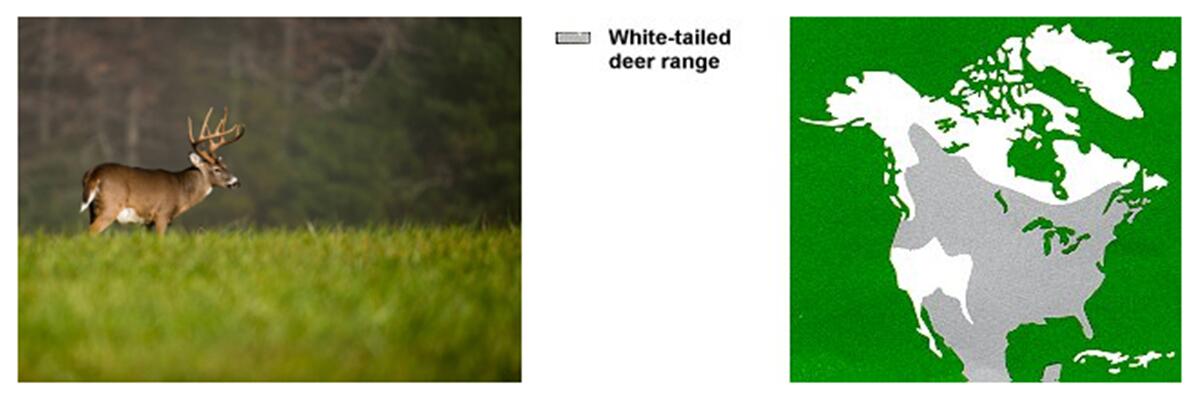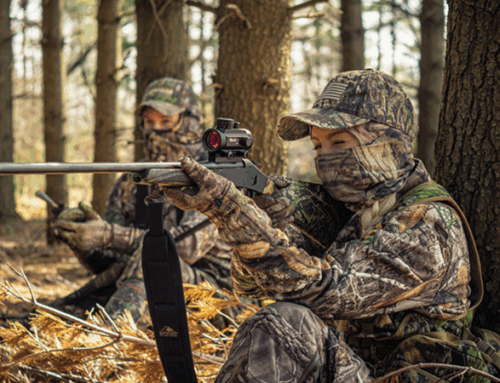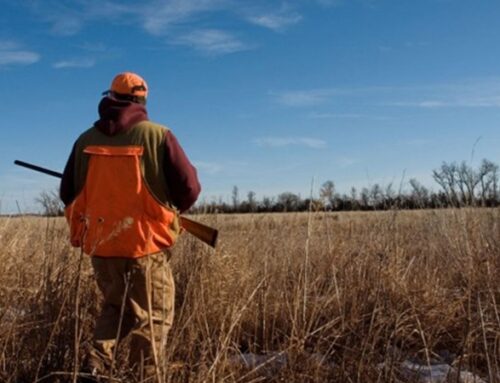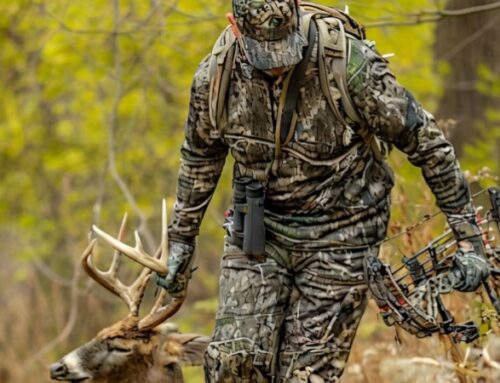The White-tailed deer is the most widely distributed and the most numerous of all North America’s large animals. Whitetails get their name from their behind; specifically, the large, white patch on the underside of the tail. This “flag” of the white-tailed deer is often glimpsed as the high spirited animal dashes away from people, making the animal easily recognizable to hunters and non-hunters alike. Today, Bowins will lead each reader to go deeper into the life of the white-tailed deer.
——-Characteristics of White-tailed Deer:
White-tailed deer are tan to reddish-brown during the summer and a grayish-brown in winter months. It has white on its throat, around its eyes and nose and on its stomach. The tail is brown with a dark center stripe above and white below. Bucks (males) have antlers while does (females) do not (with rare exceptions). An indication of a deer age is the length of the snout and the color of the coat, with older deer tending to have longer snouts and grayer coats. White-tailed deer vary in size considerably, with mature bucks weighing 150-310 pounds and does between 90-210 pounds.

——-Distribution range and habitat
The white-tailed deer predates the Ice Ages and is the oldest extant deer species. White-tailed deer is native to southern Canada, northern South America and most of the United States, except for part of the southwest, Alaska and Hawaii. Texas is home to the most white-tailed deer of any U.S. state or Canadian province, with an estimated population of 5.3 million. They are extremely adaptable to a variety of habitats and have been introduced to a few northern European countries, including Finland.
White-tailed deer can live in a variety of habitats, including farmlands, brushy areas, woods, mountains, and suburbs and gardens. They like areas with dense vegetation for protection from predators. A deer’s home range usually consists of around one square mile, but this area is not in any defined shape, rather it is based on habitat, terrain, and home ranges of dominant deer.

——-Diet and Behavior
The white-tailed deer is an herbivore or plant eater. Occasionally venturing out in the daylight hours, white-tailed deer are primarily nocturnal or crepuscular, browsing mainly at dawn and dusk. A deer’s diet changes depending on its habitat and the season. It eats green plants in the spring and summer. In the fall, it eats corn, acorns and other nuts. In the winter, it eats the buds and twigs of woody plants. White-tailed deer will typically consume 5 to 9 pounds of food each day and find water from snow, dew and waterbodies.
White-tailed deer are generally solitary (live alone), especially in summer. The basic social unit is a female and her fawns, male bucks may live in groups consisting of three or four individuals, except in mating season, when they are solitary. During the winter, these two deer groups may come together, forming communities of up to 150 individuals in locations called “yards.” This unification keeps trails open and accessible for feeding and also provides protection from predators.
——-Tips For White-tailed deer Hunting
The wise hunter never stops learning. Learning these tips may help you get off to a productive start without a frustrating hunting deer season of trial and error and ultimately have a successful deer hunt.
- Get rid of your smell
Never, ever underestimate the importance of wind direction and scent control when hunting whitetail deer. Their noses are sensitive defense systems that help alert them to predators. You do not have to worry about the deer upwind, they will not smell you. But the deer downwind, whether you can see them or not, will scare everything off. So do your best of keep your scent level down, and smell like dirt, leaves or nothing at all.
It sounds easy in principle but it’s not always easy to do. As your skin’s bacteria begins to break down the sweat your body produces, odor occurs. A long walk is enough to get any hunter stinking, even on a cold day. So Be sure you wear appropriate clothing for the weather you are hunting in, and that the clothes have good warmth and breathability.
2. Be Quiet
Deer are blessed with incredible ears that can hear a small noise at least a quarter of a mile away. The funnel shaped sensitive area inside their ear even allows the deer to distinguish fairly accurately how far away the sound was made. Well, it’s impossible to be completely silent while on the move, and if you prefer stalking your buck to sitting in a stand, you have to accept that fact. Nonetheless, we have to try, so Bowins has put together some tips to help you master the quiet hunt.
┈Go for something with a softer sole and try walking on the heels of your boots to make less noise.
┈If you are stand hunting, the unwanted “ping” of your bow, gun or other gear hitting your stand is enough to make a deer take notice that something isn’t right. Be as quiet as possible.
┈Being properly dressed. wool or soft brushed tricot clothing won’t make a strange sound when brushing against tree branches or other pieces of clothing.
┈Silence all electronics before heading out for your hunt, you don’t want to scare away your trophy buck by a chirping cell phone!
3. Choose the right camo
Big game hunters know how important hunting camo is when it comes to concealment. The right camouflage pattern can make you practically invisible to your prey, which allows you to get close and take the best shot possible. Whitetail deer can not see the entire color spectrum, but they can see in the blue-green range. And according to the National Deer Association, deer cannot perceive longer wavelengths of color like red and orange, which appear brown or gray to them. However, deer can easily detect movement in the distance. That’s why camo patterns are the best for hunting whitetails. When you want hunting camouflage which is designed to blend into the forest floor or the tree tops, woodland camo is very suitable. It is great for most deer hunting seasons except winter, which is when you’ll want a snow camo pattern if the weather calls for it.
Bowins hunting clothing has all of the above features at the same time: good water resistance and breathability keep you comfortable while hunting, while keeping you warm; the fabric of our hunting clothing is soft brushed tricot fabric that keep the hunter noiseless when moving and shooting; the camouflage design style makes you perfect concealment in deer hunting sports. The following are the hot-selling styles that our company highly recommends.

4.Hunt at the Right Time
This is the last tip but it’s just as important as the others, maybe more so. That’s because the best way to increase the odds of you seeing deer is to hunt when deer are moving. Deer have a different schedule than people. For the most part, deer move during the twilight hours, dawn and dusk. They sleep during the day. That means that at dawn they’ll be moving back to their bedding areas from the fields they feed in, and at dusk they’ll be going to opposite way. Both are great times to be hunting, no doubt. However, there is more to productive deer hunting than just getting out there early and staying late.
Hunting during the whitetail breeding season is always good. It is during the rut that bucks are moving more than normal. This increases the odds of him crossing your path. Hunting at the right time also has something to do with the weather, nothing gets deer on their feet more than cold weather. When it’s warm deer are content to sit under a tree somewhere back in the woods. When it gets below 30, 20, 10 degrees… that’s when their warm blooded engines kick into high gear. It takes energy to stay warm. Time to move and eat. Time to hunt!
Deer and people are living closer to each other because of human development and growth in deer and human populations. Because humans and deer often share a habitat. Whatever the case, if your desire is to successfully target a specific mature buck this Fall, do your best to learn from others, as well as your own experiences, to take the most ethical shot possible. Bowins will also continue to learn and summarize, and provide more effective suggestions for our partners.




